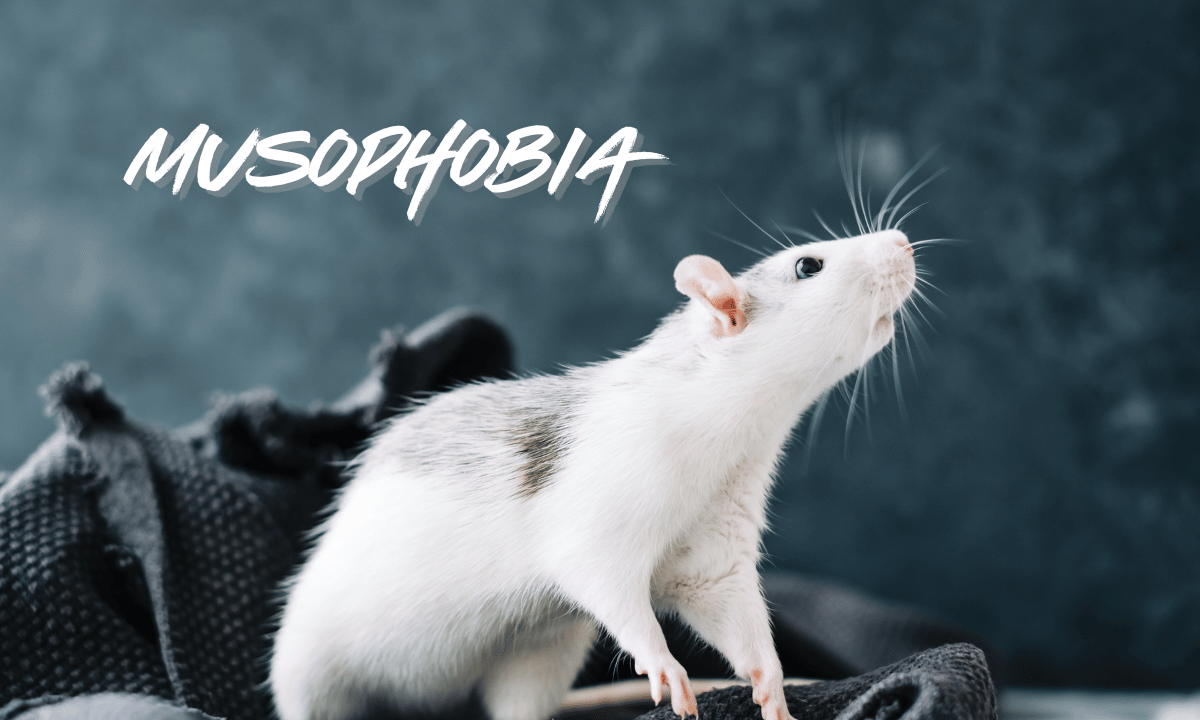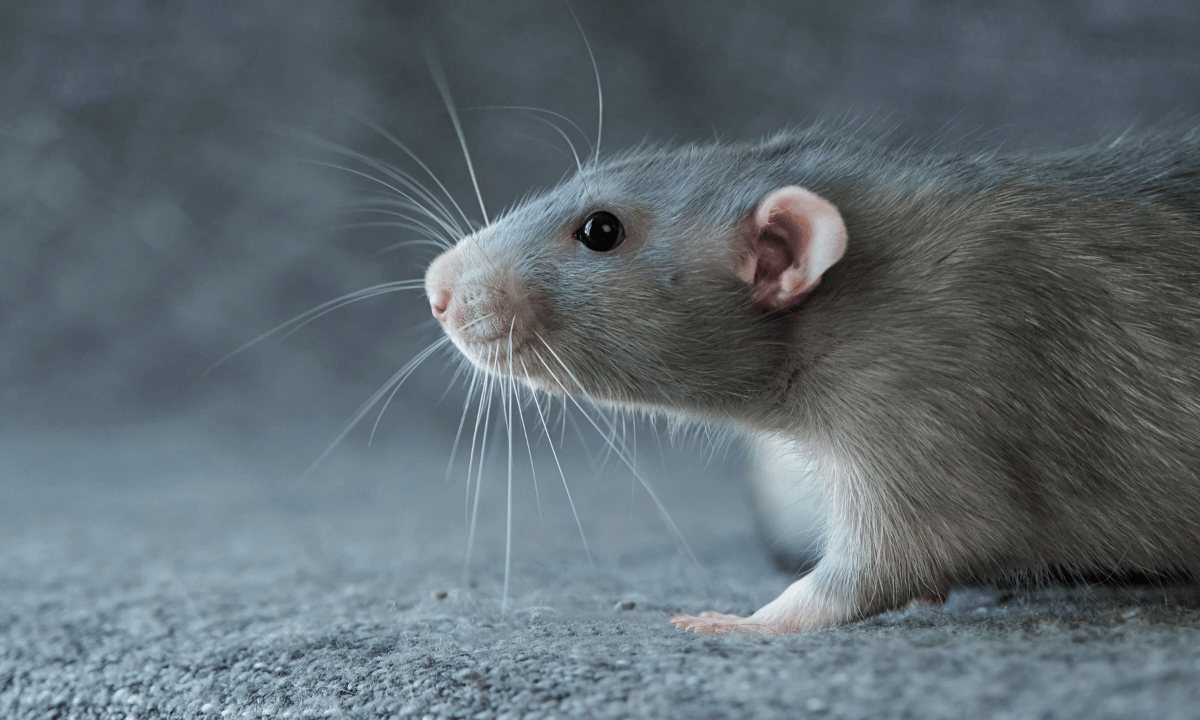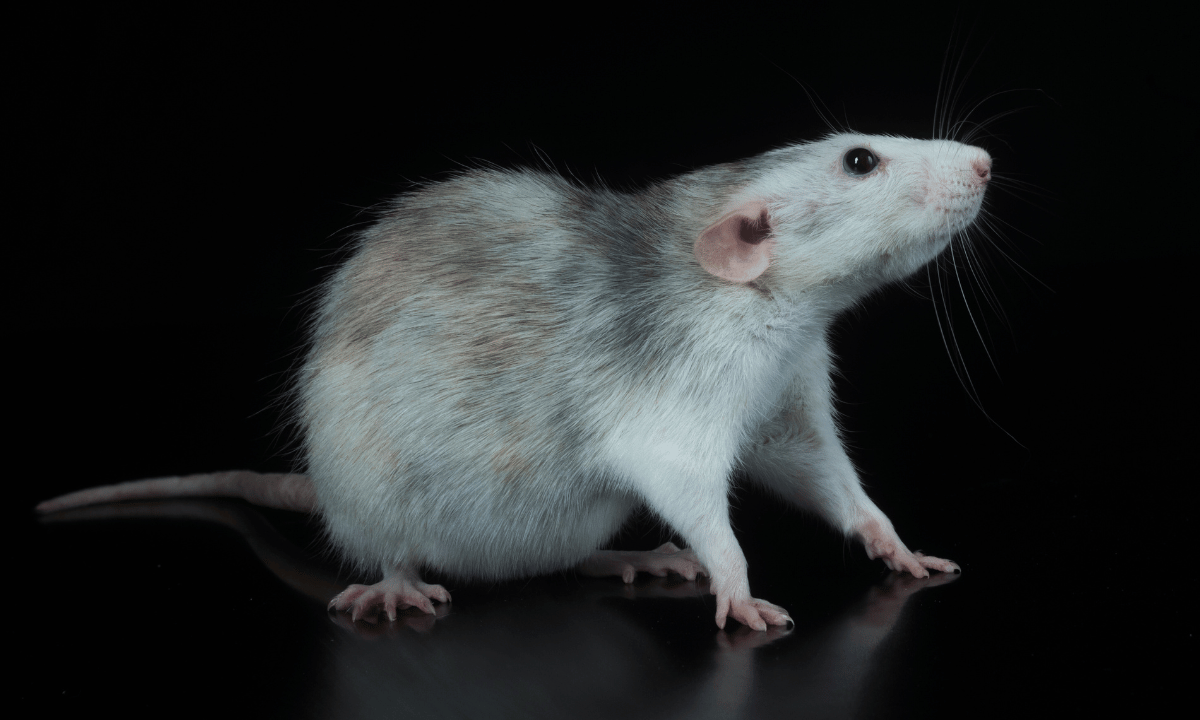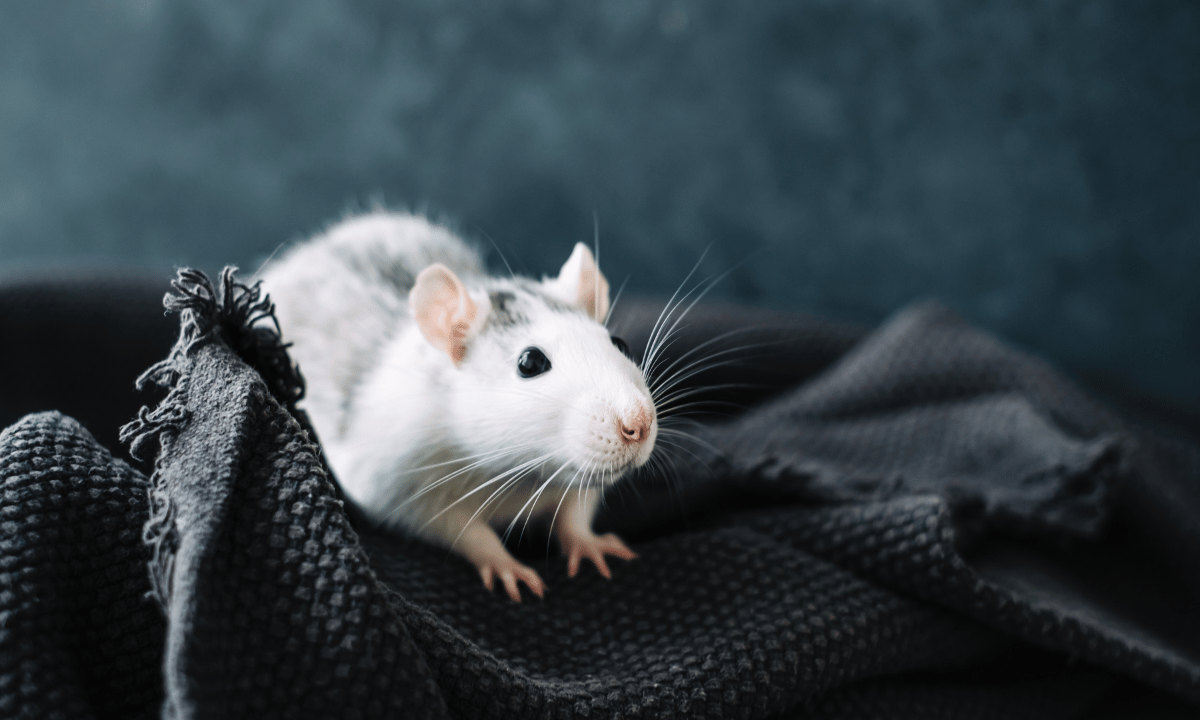- What is the phobia of rats called?
The phobia of rats and mice is most commonly known as musophobia. It is also sometimes referred to as murophobia or suriphobia.
- Is it normal to have a fear of rats?
A mild dislike or caution around rats and mice is normal, as they have historically been associated with disease. However, when the rat fear is intense, irrational, and interferes with your daily life, it is considered a specific phobia known as musophobia.
- Why am I so scared of mice?
Your fear of mice could stem from various factors. It might be due to a negative personal experience, a learned response from a family member, cultural portrayals of mice as pests, or even an evolutionary predisposition to fear creatures that could carry disease.
- How can I stop being scared of mice?
Learning how to not be scared of mice often involves a combination of strategies. These can include educating yourself about them, practising relaxation techniques, and challenging your negative thoughts. For a severe phobia, professional treatments like Cognitive Behavioural Therapy (CBT) and Clinical Hypnotherapy are highly effective.
- Can hypnotherapy cure a mouse phobia?
Hypnotherapy is a very effective treatment for overcoming a mouse phobia. It works by accessing the subconscious mind to change the underlying thought patterns and emotional responses associated with the fear, helping you to create a new, calm reaction to the trigger.
- How long does it take to get over a fear of mice?
The time it takes to get over the fear of mice varies from person to person. With focused therapy like solution-focused hypnotherapy, many clients experience significant improvement in just a few sessions. Phobia treatments are often short-term, with a typical plan consisting of around four sessions to achieve lasting results.
- What is the difference between fear and phobia?
Fear is a natural emotional response to a real or perceived threat. A phobia, on the other hand, is an intense and irrational fear of a specific object or situation that is out of proportion to the actual danger. A phobia of mice will cause significant distress and avoidance, whereas a simple fear may not.
Musophobia | How to Beat Your Fear of Rats & Mice
Interlude Hypnotherapy

Published: September, 2025
Does the mere thought of a rat scurrying across a pavement send a shiver down your spine? Do you feel a wave of panic at the faintest squeak from behind a wall? If so, you are not alone. This intense fear of rats and mice is known as musophobia, a surprisingly common condition that affects millions of people across the UK. It is estimated that nearly one in six people have a phobia of some kind, and while specific data for musophobia is difficult to find, it is thought to impact thousands. This isn’t just a simple dislike; it’s an overwhelming and often debilitating rat fear that can interfere with your daily life, causing you to avoid certain places or experience extreme anxiety. For those who suffer from it, the fear of mice can’t sleep becomes a nightly reality, as every tiny noise is amplified into the sound of an unwanted visitor.
This comprehensive guide is designed to help you understand this powerful phobia and discover a clear path to freedom. I’m Farah-Naz Khan, a Clinical Hypnotherapist and wellness coach at Interlude Hypnotherapy in Sheffield. With over 25 years of experience in holistic wellness, I specialise in helping people overcome challenges just like this. My approach combines Clinical Hypnotherapy, Psychotherapy, Cognitive Behavioural Therapy (CBT), and Neuro-Linguistic Programming (NLP) to create personalised treatment plans, available both one-to-one and online. Together, we can explore the route to a calmer, more confident life, free from the grip of rodent phobia.
What You Will Discover in This Article:
- Understanding Musophobia: We will define what is musophobia and explore the profound impact this phobia of rats can have on your life.
- Common Symptoms: Learn to identify the physical and psychological signs of a fear of rats phobia, from a racing heart to overwhelming anxiety.
- Common Triggers: Uncover the specific situations, sounds, and even thoughts that can set off a phobic reaction.
- The Root Causes: We will delve into why people are scared of rats and mice, exploring everything from personal experiences to evolutionary factors.
- Myths vs. Facts: Separate fact from fiction as we debunk common misconceptions about these often-misunderstood creatures.
- Effective Treatment Approaches: Discover powerful, evidence-based therapies like CBT and Clinical Hypnotherapy and learn how to get over the fear of mice for good.
What is Musophobia?

So, what is musophobia? In simple terms, it is an irrational and overwhelming fear of mice and rats. While many people feel a sense of unease or disgust around these rodents, for someone with musophobia, the reaction is far more severe. It triggers feelings of intense panic and anxiety that are completely out of proportion to the actual threat posed by the animal. The term musophobia itself has several variations, including murophobia and suriphobia, but they all describe the same condition. To be clinically defined as a phobia, this rat phobia must be persistent, lasting for at least six months, and significantly disrupt a person’s day-to-day existence, overall wellbeing, or sense of safety. People with this condition often know their fear is excessive, yet they feel powerless to control their response. This powerful fear is also known by other names, including murophobia or suriphobia, but the impact remains the same: a distressing and limiting condition that can make you feel trapped.
A Deeper Look into the Phobia of Rats and Mice
The phobia for rats can be linked to several specific anxieties. One of the most prevalent is a fear of infestation, where seeing a single mouse can trigger terrifying thoughts of a home overrun by rodents. This is often fuelled by the knowledge that where there is one, there are likely more, creating a feeling of being invaded and unsafe in one’s own space. Another deep-seated fear is that of contamination. Historically, rats were infamous carriers of diseases like the bubonic plague, and this association with filth and illness persists in our collective consciousness. Even though modern hygiene and medicine have made rodent-borne illnesses rare in the UK, the fear of being bitten, scratched, or catching a disease remains a powerful motivator for many. These anxieties lead to significant avoidance behaviours. You might find yourself refusing to go into basements, avoiding parks at dusk, or even feeling intense stress when watching a film that features a rat. Ultimately, musophobia is more than just being a scared rat—it’s a profound psychological response that can shrink your world and hold you captive.
Common Symptoms of a Fear of Rats Phobia

Recognising the symptoms of musophobia is the first step towards managing it. The experience can be different for everyone, ranging from mild unease to a full-blown panic attack. The severity often depends on the situation—for instance, seeing a picture of a mouse might cause mild anxiety, whereas finding one in your home could trigger an extreme reaction. The symptoms are both physical and psychological, mirroring the body’s ‘fight or flight’ response. When you encounter a trigger—which could be seeing a rat, hearing a squeak, or even just thinking about one—your body prepares for what it perceives as imminent danger. This response is automatic and can feel completely uncontrollable, even when you logically know you are safe. It’s an exhausting cycle that can leave you feeling drained and perpetually on edge.
Understanding these reactions can help demystify the experience and reduce the secondary fear of the symptoms themselves. When you are constantly scared of mice, it can be difficult to relax and feel safe, even in your own home. This constant hypervigilance can severely impact your quality of life, affecting your work, social activities, and overall mental health. Below, the symptoms are broken down into physiological and psychological categories to provide a clearer picture of what someone with musophobia might endure.
Physiological Symptoms:
The body’s reaction to a phobic trigger is immediate and powerful. These physical symptoms are not imagined; they are real, measurable responses generated by the autonomic nervous system as it floods the body with adrenaline.
- A rapid heart rate or heart palpitations: The feeling that your heart is pounding, racing, or fluttering.
- Rapid, shallow breathing or hyperventilating: You might feel like you can’t get enough air.
- Chest pain or a tightening sensation: This can be frightening and is often mistaken for a heart attack.
- Feeling dizzy, light-headed, or disoriented: A sense of unsteadiness or feeling like you might faint.
- Shaking, trembling, sweating, or chills: Uncontrollable physical reactions as your body goes into high alert.
- A dry mouth or feeling of nausea: Your digestive system can slow down or react with discomfort.
- Freezing on the spot: A feeling of being paralysed and unable to move or react.
Psychological Symptoms:
Alongside the physical turmoil, the mind is also in a state of crisis. These psychological symptoms are the internal experience of the phobia and are just as debilitating as the physical ones.
- Immediate and overwhelming feelings of fear, dread, or panic: An intense wave of terror that consumes your thoughts.
- An uncontrollable sense of anxiety: This can persist even when you know the fear of mice and rats is irrational.
- A powerful urge to run away or hide: An instinctual need to escape the situation immediately.
- A sense of being trapped or unable to escape: Feeling cornered and helpless.
- Difficulty functioning normally: You may be unable to speak, think clearly, or perform simple tasks.
- Significant avoidance: Actively avoiding places or situations where you might encounter rodents, which can severely limit your life.
Common Triggers of Musophobia

A phobic response doesn’t just happen out of the blue; it is set off by specific triggers. For someone with musophobia, these triggers can be surprisingly varied, extending far beyond the actual presence of a rat or mouse. Understanding what triggers your fear is a crucial step in learning to manage it. Triggers can be direct and obvious, or they can be indirect and subtle, catching you off guard when you least expect it. Identifying them allows you to anticipate potential challenges and begin to develop strategies to cope with them, rather than simply reacting in the moment. The fear can become so ingrained that even the slightest hint of a rodent’s presence can provoke a significant phobic reaction, making daily life a minefield of potential anxiety.
This hyper-sensitivity means that a person with musophobia is often in a state of high alert, constantly scanning their environment for potential threats. This state of hypervigilance is mentally and physically exhausting. A pile of leaves rustling in the wind, a dark shadow in the corner of a room, or an unexplained noise from the attic can all be misinterpreted as a sign of a rodent, triggering the fight-or-flight response.
The list below covers some of the most common triggers for a fear of rats phobia
Though it’s important to remember that personal experiences can create unique and specific triggers for each individual.
- Direct Sighting: The most obvious trigger is seeing a rat or mouse, whether it’s scurrying across a street, in your garden, or worst of all, inside your home.
- Sounds: Hearing sounds associated with rodents is a powerful trigger. This includes squeaking, scratching, or gnawing noises coming from walls, ceilings, or under the floorboards.
- Visual Representations: For many, the fear is so intense that even seeing a picture, a cartoon, or a video of a rat or mouse can induce anxiety or panic.
- Stories or Conversations: Hearing other people talk about their encounters with rodents, or discussing infestations, can be enough to trigger a fearful response.
- Physical Evidence: Finding signs of a rodent infestation, such as droppings, gnaw marks on furniture or food packaging, or a “rat’s nest” of shredded material.
- Specific Environments: Certain locations become triggers due to their association with rodents. These often include basements, attics, sheds, tube stations, or areas with rubbish bins.
- Unexpected Movement: A sudden, quick movement in your peripheral vision can be startling and instantly mistaken for a rodent, triggering a wave of panic before you even identify the source.
- Thoughts and Memories: Sometimes, the trigger can be purely internal. A random thought about rats or a vivid memory of a past negative encounter can be enough to set off the cycle of fear.
What Causes the Fear of Rats and Mice?
Why are people afraid of rats and mice so intensely? The origins of musophobia are complex and rarely stem from a single source. Instead, it is usually a combination of factors that weave together over time to create and reinforce the phobia. These can include direct personal experiences, behaviours learned from others, and even ancient survival instincts passed down through generations. Understanding the potential roots of your fear is not about placing blame; it is about gaining insight. By exploring where the fear might have come from, you can begin to untangle the powerful emotional connections that sustain it. This knowledge empowers you to see the phobia not as an unchangeable part of who you are, but as a learned response that can be unlearned.
For many, the fear starts in childhood, a time when we are highly impressionable and still developing our understanding of the world. A single frightening event can leave a lasting emotional imprint that solidifies into a phobia. However, it’s not always a dramatic event. Sometimes, the fear builds gradually, fed by cultural narratives, media portrayals, and the anxious reactions of those around us. Exploring these potential causes can be a revelatory part of the therapeutic process, helping you to understand the “why” behind your fear and paving the way for lasting change.
Potential Causes of Musophobia:
- A Negative or Traumatic Experience: This is one of the most common causes. A direct, frightening event, especially during childhood, can create a powerful and lasting association. Being startled by a mouse running across a room, finding a rat in your home, or, in rare cases, being bitten can leave a deep emotional scar that develops into a persistent mouse phobia.
- A Learned Phobia: Phobias can be contagious. If you grew up with a parent, sibling, or close family member who had an intense fear of mice and rats, you might have observed and absorbed their fearful reactions. Children are particularly adept at modelling the emotional responses of their caregivers, learning to associate rodents with panic and danger.
- Informational Learning: You don’t have to experience something directly to become afraid of it. Hearing frightening stories about rodents can also create a phobia. This could involve learning about the diseases they historically carried, hearing horror stories about infestations from friends or family, or being exposed to media that portrays them as monstrous pests.
- Evolutionary Origins: From an evolutionary perspective, a fear of rats was a valuable survival mechanism. For our ancestors, rodents were a genuine threat. They consumed and contaminated vital food supplies and were vectors for deadly diseases like the plague. This predisposition to fear creatures that could cause harm may have been passed down through our genes as a protective instinct.
- Significant Stress: Experiencing a period of high stress or a distressing life event can lower our emotional resilience. This can make us more susceptible to developing a phobia after a frightening encounter that we might otherwise have brushed off.
Myths vs. Facts: Debunking Misconceptions About Rats
One of the most powerful ways to start dismantling a phobia is to challenge the beliefs that fuel it. Musophobia is often sustained by a web of myths and misinformation that portray rats and mice as uniquely dirty, aggressive, and dangerous creatures. By separating fact from fiction, you can begin to recalibrate your perception and see these animals in a more balanced and realistic light. This process, known as cognitive restructuring, is a cornerstone of therapies like CBT. It involves arming yourself with factual information to counter the irrational thoughts that trigger your fear. Let’s look at some of the most common myths about rats and contrast them with the scientific reality.
Myth 1: All rats are filthy and carry deadly diseases.
Fact: This is perhaps the biggest misconception. While it’s true that wild rats can carry pathogens, the historical image of them as plague-carriers is largely outdated in modern, sanitised societies like the UK. In reality, rats are fastidiously clean animals, spending several hours a day grooming themselves, much like cats. The risk of contracting a disease from a rat is extremely low for the average person. Domesticated rats, often kept as pets, are even cleaner and pose no more health risk than a guinea pig or hamster.
Myth 2: Rats are aggressive and will attack humans.
Fact: Rats are naturally timid and fearful of humans. Their primary instinct when encountering a person is to flee and hide. A rat will almost never attack unless it is cornered, feels its life is in imminent danger, and has no escape route. The vast majority of people will go their entire lives without ever being bitten by a rat. Stories of rats attacking people are exceptionally rare and almost always involve extreme circumstances.
Myth 3: If you see one rat, your home is infested with hundreds.
Fact: While it is true that rats are social animals and one sighting can indicate the presence of others, the idea of an instant, massive infestation is often an exaggeration fuelled by fear. A single rat may be a scout looking for food or a lone individual who has lost its way. Promptly and properly sealing entry points and removing food sources is usually enough to prevent a larger problem from developing. Professional pest control can effectively handle any situation long before it gets out of hand.
Myth 4: Rats are unintelligent, vermin.
Fact: This couldn’t be further from the truth. Rats are highly intelligent creatures. Scientific studies have shown they are capable of complex problem-solving, learning and remembering routes, and can even demonstrate empathy and altruism towards other rats. They are used extensively in psychological and medical research precisely because their cognitive and social structures are surprisingly sophisticated. This intelligence is one reason they have been so successful at adapting to human environments.
Myth 5: There is no way to prevent rats from entering a home.
Fact: While rats are resourceful, they are not unstoppable. You can take many practical steps to “rodent-proof” your home. This includes sealing cracks and holes in foundations and walls, covering vents with mesh, keeping rubbish in sealed bins, and ensuring there are no accessible food sources left out. By making your home less attractive and accessible, you significantly reduce the likelihood of ever having an unwanted visitor.
How CBT and Hypnotherapy Offer a Path to Freedom
Living with musophobia can be exhausting, but it does not have to be a life sentence. Effective, evidence-based treatments are available to help you overcome this fear and reclaim your life. Two of the most powerful and scientifically supported approaches are Cognitive Behavioural Therapy (CBT) and Clinical Hypnotherapy. At Interlude Hypnotherapy, I provide an integrated treatment model, combining these therapies to create a comprehensive and personalised plan that addresses your specific needs. This dual approach is highly effective because it works on both the conscious and subconscious levels of the mind, creating deep and lasting change. These therapies are available both one-to-one in Sheffield and conveniently online, making them accessible to everyone.
The journey to overcoming a phobia like this is a collaborative one. It’s about working together to understand the structure of your fear and then systematically dismantling it. CBT provides the practical tools to challenge your conscious thoughts and change your behaviours, while hypnotherapy works on a deeper level to reprogramme the automatic, subconscious fear response. Research supports this integrated approach. A study published in the British Journal of General Practice noted that hypnotherapy can be a highly effective intervention for anxiety-related disorders, including specific phobias. Similarly, the NHS recommends CBT as a primary treatment for phobias, highlighting its success in helping people break the cycle of fear. By combining these two modalities, we can create a powerful synergy that addresses the fear of rats phobia from all angles, empowering you to move forward with confidence.
Cognitive Behavioural Therapy (CBT) for Musophobia
CBT is a practical, goal-oriented therapy that focuses on the here and now. Its core principle is that our thoughts, feelings, and behaviours are interconnected. By identifying and changing unhelpful thought patterns about rats and mice, we can change our emotional response and, consequently, our behaviour. During CBT sessions, we would work together to examine the specific beliefs you hold about rodents. For example, you might have the automatic thought, “If I see a mouse, I will have a heart attack and die.” We would challenge this by looking at the factual evidence. Has this ever actually happened? What is the real, statistical likelihood of it happening? This process, known as cognitive restructuring, helps you develop a more balanced and realistic perspective. CBT also involves behavioural components, most notably gradual exposure therapy. This is a safe and controlled process where you are systematically exposed to your fear—starting with something manageable, like a cartoon picture of a mouse, and slowly working your way up a “fear ladder” at your own pace until the anxiety subsides.
Clinical Hypnotherapy for Musophobia
While CBT works with the conscious, logical mind, clinical hypnotherapy works directly with the subconscious—the part of you where the phobia is rooted and where the automatic fear response is generated. During a session, you are guided into a state of deep relaxation and focused attention, often called a trance. This is a completely natural state, similar to daydreaming or being completely absorbed in a good book. Your conscious, critical mind takes a step back, making you more receptive to positive suggestions for change. In this relaxed state, we can re-pattern your subconscious response to rats and mice. We might use powerful visualisation techniques, guiding you to imagine future encounters with rodents where you feel calm, detached, and completely in control. This mental rehearsal creates new, positive neural pathways in the brain, effectively overwriting the old, fear-based reaction. We can also use techniques to revisit the initial sensitising event (if there was one) from a safe, detached perspective, neutralising the intense emotion attached to the memory without having to re-live the trauma.
Your Path to a Fear-Free Life Starts Now
Living with a phobia for rats can dictate where you go, what you do, and how you feel in your own home. It can feel like a prison built of anxiety. But it does not have to be this way. You have the power to overcome this fear and reclaim your life, and you do not have to do it alone. The therapeutic techniques available today offer proven and effective pathways to freedom. The journey begins not with a monumental leap, but with a single, courageous step: the decision to seek help. Imagine a life where you can walk through a park at dusk without a knot of anxiety in your stomach, visit a friend’s historic home without worrying about what might be in the walls, or hear an unexpected noise at night and simply roll over and go back to sleep. This life is not a fantasy; it is entirely possible for you.
As a Clinical Hypnotherapist with over 25 years of experience, I specialise in helping people overcome challenges just like this. My approach is personalised, compassionate, and focused on empowering you to make lasting, positive changes. I understand the courage it takes to confront a deep-seated fear, and I am here to guide and support you every step of the way. If you are ready to stop letting the fear of rats and mice control you, I invite you to take that next step. I offer a free, no-obligation 15-minute chat where we can discuss your situation and explore how an integrated therapy plan can help you. This is an opportunity for you to ask questions and feel comfortable with the process before making any commitment. Your journey towards a calmer, more confident you starts today.
Additionally, you can get in touch via WhatsApp or email by clicking the button below.
Read more articles about fear and phobia
➡️ Aerophobia (Fear of Flying) | Understanding and Overcoming
➡️ Fear of Wasps | Understanding and Overcoming Spheksophobia
➡️ Arachnophobia Disease | Causes, Symptoms, and Effective Treatments
➡️ Ailurophobia (Fear of Cats) | Causes, Symptoms, & Treatments
➡️ Entomophobia | Overcoming the Fear of Insects
➡️Scoleciphobia | Understanding and Overcoming the Fear of Worms
➡️Fear of Moths | Overcoming Mottephobia/Lepidopterophobia





